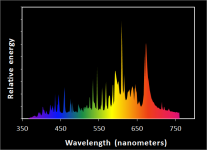SonnynGeechi
Member
They already have smd ribbons.
http://www.alibaba.com/trade/search?fsb=y&IndexArea=product_en&CatId=&SearchText=smd+ribbons
So we could us a single point light at the top the drape the tree with smd ribbons like a christmas tree....................
You guys need to stop hating on single point lighting, Remember everything has its advantages and disadvantages. Don't forget that HPS are still kicking ass as a single point light source. No reason a high power multi chip smd would not do the same and more likely better.
http://www.alibaba.com/trade/search?fsb=y&IndexArea=product_en&CatId=&SearchText=smd+ribbons
So we could us a single point light at the top the drape the tree with smd ribbons like a christmas tree....................
You guys need to stop hating on single point lighting, Remember everything has its advantages and disadvantages. Don't forget that HPS are still kicking ass as a single point light source. No reason a high power multi chip smd would not do the same and more likely better.




